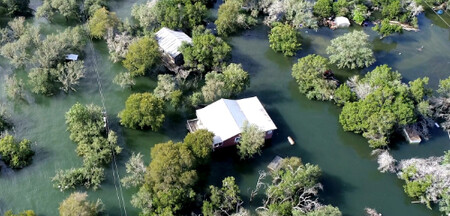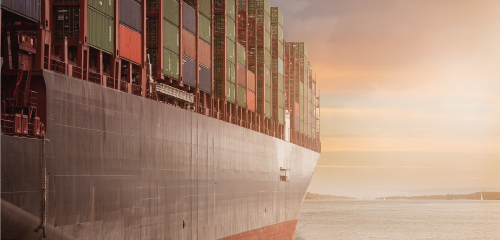The InSight

Flexible benefits are essential for maintaining a competitive employee value proposition by addressing diverse workforce needs and managing rising healthcare costs, enhancing productivity and financial sustainability.

Navigating new forms of volatility
Warranty and Indemnity insurance can be a very effective tool for both buyers and sellers in take-private transactions

Navigating new forms of volatility
A robust human capital M&A strategy can significantly enhance, and not erode, the value of a transaction.
Building a resilient workforce
Research shows that wellbeing is the top cost-mitigation strategy for APAC clients in managing rising healthcare costs. Our third Wellbeing Masterclass webinar highlighted the importance of data-driven strategies and integrating wellbeing into organisational culture for improved engagement and productivity.

Navigating new forms of volatility
Changes in legislation and regulatory oversight for critical infrastructure operators promises to introduce a new level of scrutiny and accountability for companies in Hong Kong.

Rising medical costs in APAC are promoting employers to reasses benefit strategies. How can organisations leverage evolving market dynamics and manage costs with flexible plan designs.

Navigating new forms of volatility
Regulatory change is making emissions reporting a critical capability for the insurance sector. To report accurately, an approach that considers the emissions footprint for companies they underwrite, as well as emissions coming from their own assets and activities, is required.

Navigating new forms of volatility
The economic impact of a natural disaster often goes far beyond property loss and business interruption. Struggling communities and companies require a fast source of emergency funding for many urgent needs, some of which may not be covered by traditional insurance policies.

Navigating new forms of volatility
Severe weather events highlight the Asia region’s ongoing vulnerability to typhoons, earthquakes, and flooding, with changes in exposure introducing new risks.

The Factors Driving M&A Growth Across APAC in 2025 and BeyondAs 2025 gains momentum, challenges around geopolitics, tariff and trade issues, valuations and unpredictability continue to persist, making dealmakers cautious. However, what is certain is that the APAC region would emerge as a key driver of global M&A activity in the near future. Strong economic growth, technological innovation, and a rising middle class make APAC an attractive target for both domestic and international players. Private equity firms and investment banks are increasingly active, advising on deals across various sectors and geographies for deals in APAC.

How to pay competitively and fairly: 5 tips for remuneration professionals to maximise your benchmarking approach

Balancing rising employee compensation costs with the need to attract and retain top talent is a key challenge in today’s economic environment. In this article, we explore three critical trends shaping the compensation landscape in Asia Pacific and offer insights from Aon’s data consultants to help organisations navigate a competitive job market and emerge as employers of choice.

Navigating new forms of volatility
For companies operating in Indonesia, understanding the new Personal Data Protection legislation is crucial, including requirements for obtaining consent to collect and store data, and standards that must be met for lawful data use.

Stress caused by financial pressure can have a profound impact on employees’ emotional and physical health, leading to poor engagement and reduced performance at work. How can employers mitigate the impact of employees’ financial stress at the workplace?

In the dynamic and rapidly evolving Asia Pacific (APAC) job market, successfully identifying, rewarding and retaining top talent continues to be critical for business performance. In Aon’s 2024 Global Salary Increase and Turnover study, two thirds of 4,500 organisations surveyed report that they actively identify their critical talent and key roles, as well as pinpointing high performers.

Building a resilient workforce
Despite rising investment in wellbeing programs in recent years, many organisations are grappling with a difficult challenge; their employees remain stressed, disengaged and burned out. How can HR leaders address this ‘wellbeing paradox’ and ensure their wellbeing strategies create impact?

In response to demands from investors, lenders and other key stakeholders for more consistency and comparable information on how climate might impact entities, the International Sustainability Standards Board (ISSB) has developed standards (specifically IFRS S2 climate-related disclosures), building on the recommendations of the Task Force for Climate-Related Financial Disclosures (TCFD).

In an increasingly polarised political landscape, business risks associated with regional conflict and terrorism are on the rise. As ongoing conflicts in Ukraine and Gaza heighten global political tension, businesses are becoming aware of the need to manage property loss and business interruption risks arising from acts of war and terrorism. At the same time, war cover options on offer are changing in response to geopolitical volatility.

In the world of marine shipping and cargo, acquiring delay, business interruption or trade disruption coverage has not, historically, been a focus for marine players. However, with the increasing complexity of global supply chains and the unpredictable nature of disruptions, the need for effective delay coverage is becoming more apparent. Delay and disruption are driven by a wide range of factors that can change suddenly, making comprehensive risk management solutions more crucial than ever.

Building a resilient workforce
As companies tailor healthcare benefits to cater for the needs of a diverse workforce, women’s health and family building are emerging as key focus areas.

Building a resilient workforce
While investing in employee wellbeing is crucial for ensuring sustainable business performance, it’s essential for employers to understand how data and analytics optimise value from health and wellbeing investments.

Navigating new forms of volatility
The recent CrowdStrike outage incident underscored the reality that cyber risks extend beyond deliberate attacks and can stem from routine updates or software glitches.

Navigating new forms of volatility
A comprehensive understanding of asset valuations is a strategic imperative for organisations to help better align valuation processes with risk management and financial decision making.

Building a resilient workforce
Employers that offer flexibility and an inclusive culture can help caregivers balance their responsibilities – both at work and in their personal lives.

Navigating new forms of volatility
Effective management of working capital is critical to every organisation’s financial health and sustainable growth. Benchmarking performance can help identify areas for improvement.

Building a resilient workforce
Addressing workforce mental health risk has become a key priority for organisations in APAC. However, without integrating the employee assistance program (EAP) into their overall wellbeing strategy, many may find it challenging to fully leverage this investment.

Navigating new forms of volatility
The recent global IT outage is an important reminder of the robust resilience programs necessary to manage such events and highlights the need to be strategically prepared to limit disruptions.

Navigating new forms of volatility
Watch our webinar to learn about the lasting impacts the CrowdStrike event will have on cyber insurance market dynamics, including pricing, coverage, capacity, and insurer behaviours in the Asia Pacific region.

Navigating new forms of volatility
The term “climate change”, or more recently just “climate”, is shorthand for a wide gamut of topics that span the physical impacts of changing weather behaviour, the net zero energy transition, and the evolving legal and regulatory environment that is designed to price climate into global markets.

Navigating new forms of volatility
Distressed mergers and acquisitions (M&A) transactions are often run on a shorter timeframe and with the sellers being unwilling or unable (if the entity is under formal insolvency proceedings) to provide warranties and/or specific indemnities.

Navigating new forms of volatility
Ensuring a smooth transfer of risk is dependent on a claims process that has been proactively considered, built and tested. Utilising data and analytics to quantify potential losses and assess exposure gaps is a crucial first step.

Navigating new forms of volatility
Having a seat at the table at the development stage of an organisation’s AI agenda allows risk managers to provide strategic guidance and inform operational decisions about the deployment of AI initiatives.

Navigating new forms of volatility
Cyber crime and artificial intelligence have reached a nexus making it increasingly difficult to spot an attack. Credit managers need to be especially diligent to protect the valuable information they hold.

Navigating new forms of volatility
Automating operations provides productivity gains and efficiency, but also introduces new risks, including cyber-physical damage exposures.

Cancer is one of the top medical conditions driving medical plan costs in APAC. Hear Dr. Raghav Murali-Ganesh, co-founder and CEO of Osara Health, and Alan Oates, Asia Pacific head of advisory and specialty, Health Solutions, discuss practical steps to support employees through their cancer journey.

Building a resilient workforce
Organisations that are looking to grow their business and/or expand into global markets need a robust job architecture that facilitates sustainable growth and scalability

Navigating new forms of volatility
Navigating the path to cyber resilience is a complex risk management journey. Forward-looking strategies are essential.

Navigating new forms of volatility
Contract monetisation can accelerate cash flows owed under medium to long-term contracts and can help balance operational liquidity requirements with longer-term growth objectives.

Navigating new forms of volatility
The growing risk of an intellectual property dispute ending up as a D&O claim must alert the C-suite to mitigate their IP risks.

Navigating new forms of volatility
In a period of escalating ransomware attacks, it is crucial to ensure your organisation is doing enough to combat this threat

Navigating new forms of volatility
While the current climate is driving increasingly unpredictable weather events, it presents an opportunity for organisations to take a more holistic approach to building resilience

Navigating new forms of volatility
Tax liability insurance for a PN7 exposure can complement an organisation’s overall risk management strategy and help unlock greater value.

Navigating new forms of volatility
Contingent risk insurance can be a game-changer, providing coverage for legal risks such as those arising from litigation, tax liability and regulatory issues.

Building a resilient workforce
Organisations are expecting a sharp rise in employee medical plan costs for 2024. Here are four strategies to help minimise the impact on your company.

Navigating new forms of volatility
Collaboration between the Chief Information Security Officer and Chief Risk Officer to understand an organisation’s true cyber risk posture is a key part of overall cyber maturity.

Building a resilient workforce
As businesses integrate sustainability into their strategy to leverage the opportunities brought on by the 'green transition,' they will require "green skills" to successfully implement these strategies.

Building a resilient workforce
Globally, we see that there are multiple factors driving organizations to invest in and embrace ESG policies and practices. For example, the fast evolving regulatory and compliance requirements, heightened interest from investor relations and board focus, increase in social movements, activism and changing expectations of employees.

Navigating new forms of volatility
The landscape of M&A carve-outs is complex and dynamic, but untapped opportunities to capture value are there for the taking for those willing to re-evaluate their approach to dealmaking.

Building a resilient workforce
Organisations with a culture aligned to their business objectives tend to outperform their peers. A systematic, data-driven approach can help achieve strong cultural alignment.

Building a resilient workforce
Understanding the opportunities for improving gender representation in the tech sector can help address the barriers faced by women in career advancement and foster a more diverse and inclusive workforce.

Building a resilient workforce
While technical skills are crucial for success in most roles, communication and adaptability matter too. Personality tests can help HR gain a holistic understanding of a candidate's behavioral attributes, ensuring a more accurate fit for the role and organization.

Building a resilient workforce
HR professionals are looking for ways to increase ROI from existing benefits programmes, be it through improving employee engagement, enhancing benefits data management, and amplifying employee wellbeing.

Building a resilient workforce
Investment in wellbeing has risen in APAC in the recent years, but employers are introducing initiatives that do not align with what their employees need or want.

Navigating new forms of volatility
Understanding how climate phenomena affect weather is essential for predicting future conditions which can help the (re)insurance industry anticipate financial losses.

Building a resilient workforce
An inadequate focus on the right people strategy may compromise the success of M&A deals. HR teams must address the key people challenges that arise throughout the process.

Navigating new forms of volatility
Understanding the opportunities, benefits and limitations of captive mechanisms can help organisations make better decisions around strategic risk finance.

Navigating new forms of volatility|Rethinking access to capital
Credit solutions can enhance liquidity, improve transaction returns, and facilitate capital-efficient deal closures. Post-acquisition, credit solutions can also drive private equity value creation through working capital initiatives.

Building a resilient workforce
Effective succession planning is crucial for business continuity and long-term success, but many organisations neglect to invest in developing future leaders, only addressing the issue when a vacancy arises.

Navigating new forms of volatility
Regulation has the potential to influence product and service innovation as organisations seek to meet their climate-related financial risk management obligations.

Navigating new forms of volatility
With the capital markets continuing to be quiet compared to past years, private companies should consider using this time to do preparatory work for becoming publicly listed entities.

Navigating new forms of volatility
Natural disasters in the Asia Pacific region in 2022 amounted to a total loss of USD 80 billion. The extreme weather across the year highlights the continuing need to strengthen resilience to better protect our communities for the future.

Building a resilient workforce
With the ESG reporting landscape rapidly picking up pace, creating new risks and opportunities, organisations and boards need to ensure ESG preparedness and disclosure plans are on track to drive long-term sustainable growth.

Building a resilient workforce
Employers are struggling to align wage increases with inflation. However, with valuable insight into employees’ needs, compensation and benefits managers can make more informed decisions that support both the workforce and the organisation.

Building a resilient workforce
Offering diverse and inclusive employee benefits has become crucial for attracting and retaining sought-after skills from a wide talent pool. Build a more resilient and engaged workforce with the right mix of employee benefits.

Building a resilient workforce
In order to attract top talent in today’s unpredictable market, benefit plans need to offer flexibility, options and personalisation, while also addressing diverse needs.

Building a resilient workforce
A clear employee benefits strategy is vital for ensuring your benefits offer is competitive, compliant and valued by employees. However, a lack of data is making strategy development and decision making a challenge for many employers.

Building a resilient workforce
While ESG is often seen as a boardroom matter, HR professionals are in a unique position to deliver on the ‘social’ aspect, as investors want to know how companies are addressing issues such as employee health and wellbeing.

Building a resilient workforce
To compete for talent and remain authentic, HR teams need to leverage data to inform and update the employee value proposition.

Building a resilient workforce
As healthcare costs and medical inflation rise, employers are weighing up employee health and wellbeing benefits.

Building a resilient workforce
While the skills shortage and inflation are driving salaries up, there’s also a need to contain costs. Robust data is the key to a balanced and competitive compensation strategy.

Navigating new forms of volatility
Our expert panel discusses key market movements, cyber loss trends and expected conditions in 2023 in the Asia Pacific region.

Navigating new forms of volatility
High certainty in global warming science should not be confused with the inherent uncertainty in modelling the impacts of climate change on business operations. Read more

Navigating new forms of volatility
By treating disclosure as one important outcome from a broader exploration of climate-related risks and opportunities, organisations can realise far greater value. Read more

Navigating new forms of volatility
The complex inflationary environment is set to impact Asian economies in different ways, and in some instances may exacerbate underinsurance risks.

Navigating new forms of volatility
Climate change ambition without clear disclosure is no longer an option. Investors, stakeholders, and regulators are looking to understand how organisations are addressing climate-related risks.

Navigating new forms of volatility|Rethinking access to capital
A common reason for delays or failures for infrastructure projects is poor alignment on risk between stakeholders and inadequate risk allocation. Credit and political risk insurance can support success in sustainable development.

Navigating new forms of volatility
To complement traditional indemnity programs and to match capital to climate risk more adequately, organisations such as AboitizPower, are increasingly turning to parametric insurance solutions.

Navigating new forms of volatility
Can the new generation of catastrophe loss models present a truly holistic physical climate risk solution? Read more.

Building a resilient workforce
As COVID-19 becomes endemic and a new world of work is adopted across economies, how can leaders champion mental resilience within the business?

Navigating new forms of volatility|People & Organisations
As the scale of ESG-related expectation, opportunities and risks continue to expand, organisations would benefit from a transformational change rather than an incremental change. Learn more.

Navigating new forms of volatility
As catastrophic events increase in severity, how can you build your climate risk resilience and make the right decisions for your future?

Navigating new forms of volatility
The lack of risk management in M&A and divestiture planning could expose businesses across various industries to unnecessary risk. Learn more.

Navigating new forms of volatility|Rethinking access to capital
How can your business successfully adopt environmental, social, and governance (ESG) measures?

Navigating new forms of volatility
With business interruption being the top current risk in Asia, how can companies make better decisions to navigate and thrive in an increasingly complex environment?

Navigating new forms of volatility
With no end to the pandemic in sight, businesses must adopt refreshed risk management strategies to remain resilient amid prolonged uncertainty. Learn more.

Addressing the underserved|Risk & Innovation|Technology, Media, and Telecommunications|Financial Services
Digital-only banks are increasingly meeting the demand for innovative products and better customer experience for the digital age.

Navigating new forms of volatility|Building a resilient workforce|Technology, Media, and Telecommunications
How can banks ensure that their investment in digital transformation has a faster run rate on savings?

Building a resilient workforce|People & Organisations
Voluntary benefits can form a crucial part of employer value propositions and address the needs of a diverse workforce.

Building a resilient workforce|People & Organisations|Financial Services
APAC’s financial services organisations look to health benefit trends to manage rising costs in the new normal.

Addressing the underserved|Risk & Innovation
In a post-pandemic world shaped by digitisation, innovation, and social responsibility, how can business leaders prepare?

Rethinking access to capital|Capital & Economics|Financial Services
How are credit insurers supporting financial institutions in financing the green economy?

Building a resilient workforce|People & Organisations|Financial Services
How can businesses balance both the digital and people aspects of digital transformation in the “new better”?

Navigating new forms of volatility
How can businesses make workforce decisions to drive the Future of Work agenda while foreseeing how other parts of the organisation may be impacted?

Addressing the underserved|Risk & Innovation
One year on, have businesses in APAC reprioritised risk and resilience in the post-pandemic new world of work?

Navigating new forms of volatility|Risk & Innovation
What is the marine insurance position of the m/v EVER GIVEN and the vessels whose passage has been hindered?

Navigating new forms of volatility|Capital & Economics
How can oil producers start managing risk and building resilience today to succeed in a post-pandemic era?

Building a resilient workforce|People & Organisations
As economies across Asia begin to reopen, how can business leaders drive economic and employee value in the workplace of the future?

Building a resilient workforce|People & Organisations
As economies begin to reopen after the COVID-19 lockdowns, how can businesses prepare for the future of pay in a new world of work?

Rethinking access to capital|Capital & Economics
How can risks can be negotiated to create successful M&As in the dynamic energy industry?

Building a resilient workforce|People & Organisations
In a post-pandemic economy, how can businesses achieve an optimal pay structure that delivers maximum value for organisations and workers?

Navigating new forms of volatility
How can leaders in the Philippines address pandemic business challenges as a result of tiered quarantine measures?








